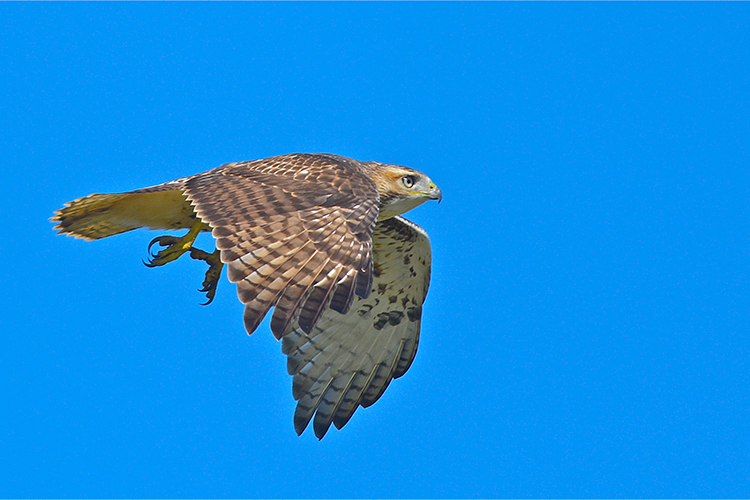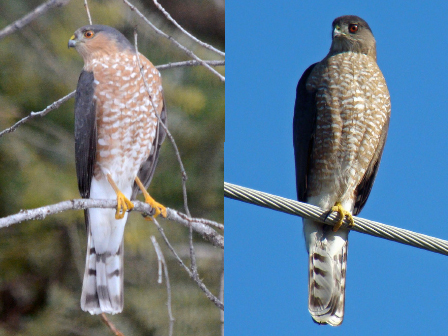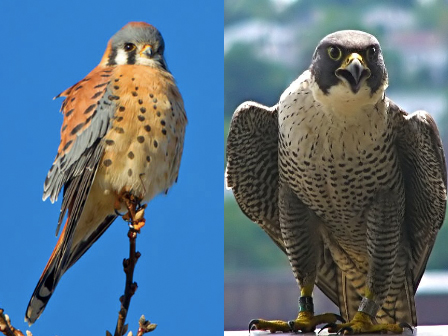Hawks, falcons, and vultures are among the few groups of birds that migrate during the day.
Unlike songbirds and waterfowl, which migrate under cover of night, raptors are actually visible as they make their long journeys across continents.
Although hawks pass by some sites by the hundreds or thousands, that doesn’t necessarily mean you can see them from any site on any day of the season. To find your best day and destination, you have to think like a hawk.

Riding the Airwaves
Raptors have one goal when migrating: use as little energy as possible to make it to their destination. So, they seek out rising air currents to help them gain altitude without flapping.
Air rises as it is heated by the warmth of the ground (a “thermal”), or pushed upwards by passing over a hill or mountain (an “updraft”). Raptors circle inside these columns of rising air as it carries them upwards. As the air cools and stops rising, raptors exit and glide for miles, slowly losing altitude until they find another column (or start flapping).
Hawks often end up riding the same air current together, forming a rising spiral of birds, or a “kettle.” Kettling isn’t actually a social behavior, even if it looks like the hawks are flying together. Thermal-surfing raptors are simply taking advantage of the most efficient route, like drivers on a highway.
Cool Weather, Hot Hawkwatching
Thermals are strongest when the ground is much warmer than the air. Hawkwatching can be excellent when a cold front moves through, bringing cold air over the (temporarily) much warmer ground and sending thermals spiraling upwards.
Cold fronts are often accompanied by winds from the north, which are conducive to southbound raptors in the fall. When clear, cold air moves in from the north after many days of poor migration conditions (either rain or strong winds from the south), unusually high numbers of restless raptors can be seen migrating at once.
Timing is Everything
Mid-September is prime season for viewing Massachusetts’ most numerous and conspicuous raptors, like Broad-winged Hawks and Ospreys, as well as less common species like American Kestrels and Sharp-shinned Hawks. As the season cools, the mix shifts a little, but the hawkwatching often stays good until late October and tapers off into November.





